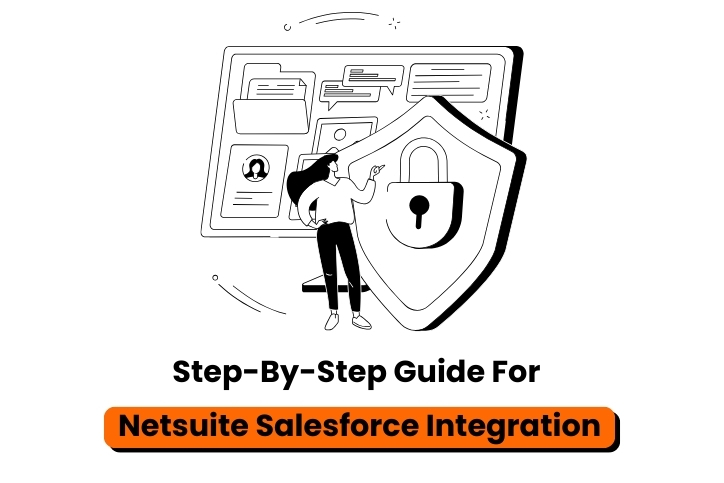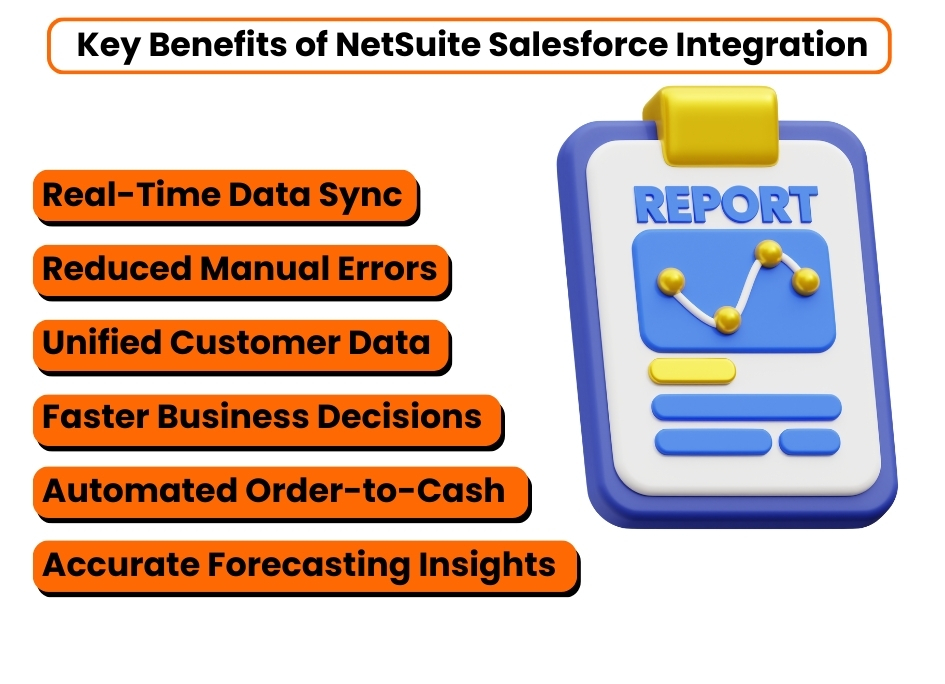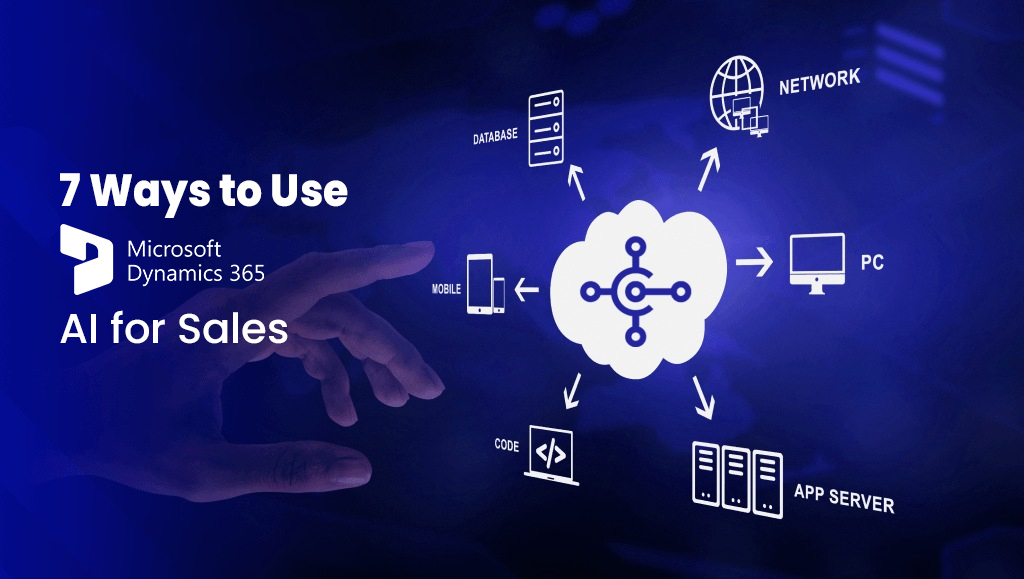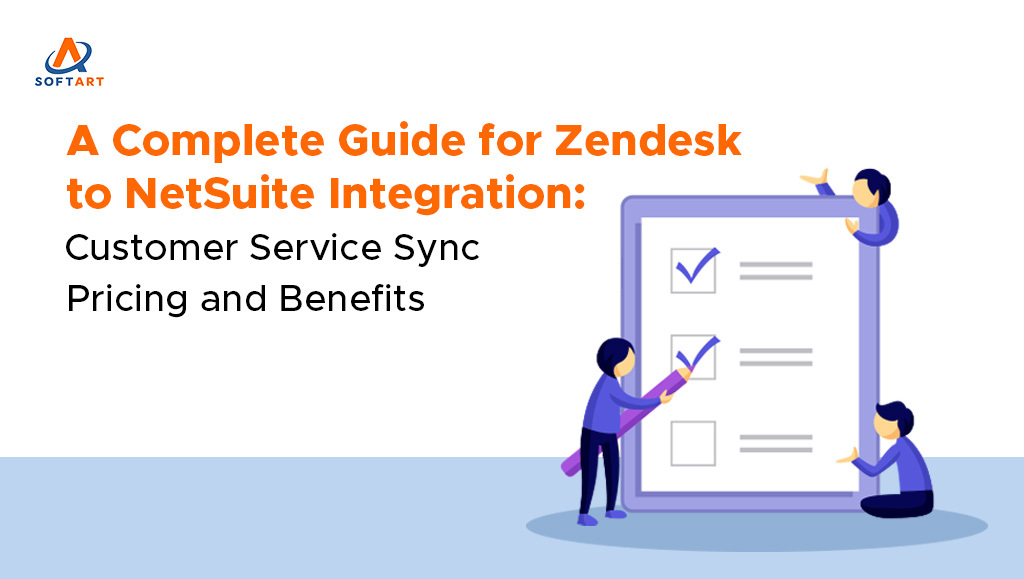Disconnected CRM and ERP systems drain revenue and frustrate customers. Sales data sits in Salesforce, while orders, billing, and reports stay in NetSuite. The result: duplicate entry, delayed forecasts, and slow cash flow. A single integration fixes this by synchronizing leads-to-ledger data in real time.
This guide shows how to integrate NetSuite and Salesforce, offering a clear NetSuite Salesforce integration step by step, from field mapping and API provisioning to bi-directional sync and error handling. You’ll learn where projects usually fail (misaligned schemas, weak change management) and how automation boosts renewal and revenue-recognition accuracy.
Engaging proven experts, such as SoftArt, leading netsuite integration partners UAE that deliver end-to-end netsuite integration services, cuts risk and speeds go-live. The payoff: one source of truth, faster closes, and a customer experience that keeps pace with today’s digital-first expectations.
Step-by-Step Guide to NetSuite Salesforce Integration
Here is the detailed, NetSuite Salesforce integration step by step framework to achieve seamless connectivity.
1. Define Integration Goals
Start by identifying the exact outcomes you want. Examples include:
- Automating order-to-cash processes
- Eliminating duplicate customer records
- Syncing real-time sales and revenue data
- Improving reporting and forecasting
Clear goals prevent scope creep and ensure alignment across sales, finance, and IT.
2. Map Data Workflows
Develop a blueprint that defines how data will flow between systems. This ensures consistent and error-free syncing.
Common workflows include:
- Customer Accounts: Unified customer profiles across systems.
- Opportunities to Orders: Closed deals in Salesforce create orders in NetSuite.
- Invoices & Payments: Financial data flows back into Salesforce.
- Inventory Updates: Stock levels remain consistent across departments.
3. Select the Integration Method
There are multiple approaches to choose from:
- Native Connectors: Prebuilt connectors are quick to deploy and suitable for standard use cases.
- Middleware Platforms: Tools like Celigo, Dell Boomi, or MuleSoft offer scalability and flexibility for growing businesses.
- Custom APIs: Ideal for enterprises with complex, highly tailored workflows.
Each method has trade-offs in terms of cost, speed, and customization.
4. Configure and Customize
Field mapping, trigger points, and automation rules should reflect your actual business processes. For example:
- A closed deal in Salesforce automatically triggers an invoice in NetSuite.
- Payment status updates in NetSuite flow back into Salesforce for sales visibility.
5. Test Thoroughly
Testing is where many integrations fail. Focus on:
- End-to-end scenarios covering all data flows.
- Error handling for failed transactions.
- Performance validation under peak loads.
6. Train and Deploy
Train staff across departments on new workflows, dashboards, and error-resolution methods. A phased rollout, starting with a pilot, reduces risk and ensures smooth adoption.
A Proven 5-Step Success Framework for NetSuite Salesforce Integration
To simplify execution, enterprises can follow this repeatable model:
- Assessment: Identify system gaps and integration priorities.
- Design: Map processes and establish governance.
- Implementation: Configure and deploy connectors, middleware, or APIs.
- Validation: Test integration scenarios and refine workflows.
- Adoption: Train users and monitor adoption with ongoing optimizations.
This framework ensures alignment, reduces risks, and accelerates value realization.
Business Benefits of NetSuite Salesforce Integration
Once Salesforce and NetSuite are connected, businesses unlock a wide range of benefits:
- Single Source of Truth: Eliminate duplication and provide unified customer data.
- Automated Order-to-Cash: Close deals faster and streamline revenue cycles.
- Accurate Forecasting: Real-time updates across sales and finance enhance predictive accuracy.
- Higher Efficiency: Reduced manual work frees up staff for strategic tasks.
- Customer Delight: Faster service, fewer errors, and consistent experiences.
Practical NetSuite Salesforce Integration Tips to Avoid Pitfalls
Here are actionable insights for smooth integration:
- Focus on Data Hygiene: Clean your Salesforce and NetSuite records before syncing.
- Don’t Over-Customize: Stick to standard integrations where possible.
- Roll Out in Phases: Start small and expand gradually.
- Document Processes: Maintain integration guides for future reference.
- Monitor Continuously: Use alerts and dashboards to detect issues early.
Cost, Timeframe, and ROI Breakdown
NetSuite Salesforce Integration requires thoughtful budgeting. Here’s a quick comparison:
| Integration Method | Timeframe | Cost Range | Best For |
|---|---|---|---|
| Native Connector | 2–4 weeks | AED 18,000 – AED 36,000 | Standard data flows |
| Middleware | 4–8 weeks | AED 55,000 – AED 110,000 | Growing enterprises with complexity |
| Custom API | 8–12 weeks | AED 128,000 – AED 220,000 | Unique, highly customized needs |
ROI Insight: Companies often achieve payback within 12–18 months through reduced manual labor, faster invoicing, and better customer service.
Case Example: Integration in Action
A global e-commerce enterprise used Salesforce for CRM and NetSuite for ERP. Before integration:
- Order processing was manual, leading to delays and mistakes.
- Financial reporting took weeks, slowing leadership decisions.
After deploying a middleware-based integration:
- Order processing became fully automated.
- Monthly close cycles shortened by 30%.
- Customer satisfaction scores improved due to faster deliveries.
Choosing the Right NetSuite Salesforce Integration Partner
Integration projects require technical depth, industry knowledge, and post-deployment support. Working with NetSuite integration partners UAE ensures expertise in both platforms, compliance, and scalability. Leveraging expert NetSuite integration services also ensures your systems remain optimized and future-proof.
Ready to simplify your ERP journey and maximize ROI? Schedule a free consultation with SoftArt Solutions Inc. today.
Frequently Asked Questions:
Q1. What is NetSuite Salesforce integration?
Ans. NetSuite Salesforce integration connects Salesforce CRM with NetSuite ERP to ensure seamless data flow, unified reporting, and automated business processes.
Q2. Why should businesses integrate Salesforce and NetSuite?
Ans. Integration eliminates data silos, reduces manual work, enhances forecasting, and creates a single source of truth across sales and finance teams.
Q3. How long does NetSuite Salesforce integration take?
Ans. The timeline depends on the method: native connectors (2–4 weeks), middleware (4–8 weeks), and custom APIs (8–12 weeks).
Q4. What are the main challenges during integration?
Ans. Common challenges include data duplication, over-customization, poor data hygiene, and lack of proper testing.
Q5. How do I choose the right integration partner?
Ans. Select experienced NetSuite integration partners who understand both platforms, your industry needs, and can provide long-term support.







![Duplicate Data in Dynamics 365 [What It Costs and How to Fix It]!](https://softartsolutionsinc.com/wp-content/uploads/2025/12/duplicate-data-in-dynamics-365-what-it-costs-and-how-to-fix-it.jpg)

